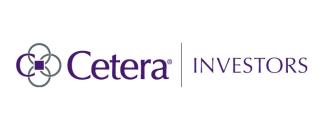
How Contract Pilots Can Optimize Retirement Savings
So, you’ve made the decision to become a contract pilot. The good news is the demand for your services continues to increase according to James Onieal of Raven Careers. Current hiring activity will see the airlines poaching pilots away from their corporate flight departments. The shortage of pilots to staff corporate flight departments, means an increased reliance on contract pilots. “We’ve already seen contract rates go up by 30-40% says Onieal. To put this into perspective, conservative pre-recovery contract rates looked something like this:
Flying a light turbo prop, like a King Air, fetched $850/day and opportunities to fly 10, 15 or 20 days per month. A Super midsized jet, like the Challenger 350 may have brought in $1500-$1800/day and opportunities to fly 10, 15 or 20 days per month. A large business jet such as the Challenger 650 would command $2000+ or more per day with opportunities to fly 10, 15 or 20 days per month. “Of course, the day rates depend on a number of factors, including location and the amount of time a company uses contract pilots but in general contractors should continue to expect rates to rise along with the amount of flying.” advises Onieal.
In this article we focus on three critical areas of your self-employment venture: 1. Your Set-Up 2. Your Protection 3. Strategies to help you manage your current and future tax liability.
Your Set Up: Your new business needs to have a legal entity. This can take several forms, but two common entities are an LLC or an S corporation. While these entities typically offer some protection from personal liability for incidents arising from your business activities, the real value is the ability to easily transact your necessary business. You can typically create your corporate structure through your state’s Office of Secretary of State. You’ll also need to apply for an IRS employer identification number (EIN). This number will identify your company to the IRS, it will also allow you to open a separate business bank account and avoid using your SSN when you receive payment from clients. The EIN can easily be applied for online and is free.
Both LLCs and S Corps are considered pass through entities, meaning profits are taxed at your individual tax rate rather than once at the corporate tax rate and again at the individual level. Your amount of earnings may play a factor in how you decide to be taxed. In the beginning, you may decide that passing all your income through your individual tax return is sufficient and gets the job done. As earnings increase, you may begin looking for additional ways to save on taxes, including investing in tax-deferred or tax-free retirement accounts. The decisions you make during set up will impact how efficiently you can save later. If you don’t get it right the first time don’t worry, you can adjust your corporate structure and tax-structure as you go along. I recommend partnering with a proactive CPA who is well versed in small business to provide guidance on your legal entity.
Your Protection: Life can be messy, and things happen. As mentioned above, the legal entities of an LLC or an S Corp offer some protection from personal liability for incidents arising from your business activities. However, the real protection comes from you intentionally putting it into place. If you’re a contract pilot who flies aircraft that you don’t own, there are a few ways to make sure you’re protected. While it may not be feasible to implement these protections for every trip, especially the last minute or one-and-done quick trips, it’s certainly worth your time to put them in place as often as you can.
- Ensure the owner has included you and/or your company as an additional insured on their policy.
- Require a waiver of subrogation for hull and physical damage of the aircraft. This means that if something happens, the owner’s insurance company agrees NOT to pursue you and your company for damages that they’ve paid out. These two points may represent the most cost-efficient methods of securing protection and insurance companies are used to adding these endorsements.
- Lastly, if you’re engaged with an owner for a long-term contact, require that they advise you of any upcoming changes to the insurance policy 30 days prior to the change taking place.
You exercise the privileges to fly because you’ve spent countless time and resources training, implementing safe flying practices, staying current and because you’re healthy enough to do so!
We all have the genes that we’re dealt and sometimes health issues manifest themselves at the most inconvenient times. Protect your ability to earn a living with loss of medical insurance. Loss of medical insurance or pilot disability insurance is a good idea if your family cannot go an extended period without income. Typically, both short- and long-term disability policies will have an elimination period or a specific amount of time you must wait before benefits begin to payout. It is a good idea to match the amount of time you must wait (for example 30 days, 60 days etc.) with the amount of money you usually keep in your emergency savings account. Coordinating your emergency savings with your loss of medical insurance elimination period allows you to begin pulling from your emergency savings immediately while your insurance countdown begins in the event you are grounded.
Saving For Your Future: Now that you’re legal, you’re protected and you’re making money, it’s natural to think about how you can save for retirement and how to use these tools to help manage your current and future tax liabilities. As a self-employed person with no other employees, there are many retirement accounts you can choose from. We’ll discuss two popular accounts here and review their characteristics.
SEP IRA – This option is extremely easy to administer. Self-employed individuals can save up to 20% of their net self-employment income into the SEP IRA, up to the 2021 maximum of 58k. In 2022 this will go up to 61k. Since self-employed individuals wear both the employer and the employee hat, these contributions are considered a “pre-tax employer contribution”. You can quickly see the impact that reducing your tax liability by up to 58k can have on the amount of income taxes owed.
Solo 401k/Individual 401k – This option is also easy to administer although it requires a little more paperwork and reporting than the SEP IRA. Here a self-employed individual has a few more tools available than the SEP IRA. First, you can contribute 100% of your earnings up to the limit ($19,500 in 2021 and $20,500 in 2022). The beauty here is that you can designate these dollars as either a pre-tax contribution or a post-tax Roth contribution. The availability of the Roth designation becomes increasingly important, especially if your modified adjusted gross income is greater than 198k/year (if filing married filing jointly, & 125k/year if filing single in 2021). When your AGI is greater than 125k/year or 198k/year then you’re unable to contribute the full amount directly to a Roth IRA.
The other feature the Solo 401k/Individual 401k has is profit sharing. This portion, like the SEP IRA would be designated as the pre-tax employer contribution. In total, you’ll be able to put up to 58k (2021) or 61k (2022) into the account with the added benefit of designating the taxability of your contributions. You can fine-tune your pre AND post tax contributions to meet your family’s needs.
Like many pilots, you’ve fallen in love with aviation and the need to be above it all while flying. Take the right steps to protect and maximize your greatest asset – You and your earning potential.
** For a comprehensive review of your personal situation, always consult with a tax or legal Advisor. Neither Cetera Investment Services, nor any of its representatives may give legal or tax advice.

